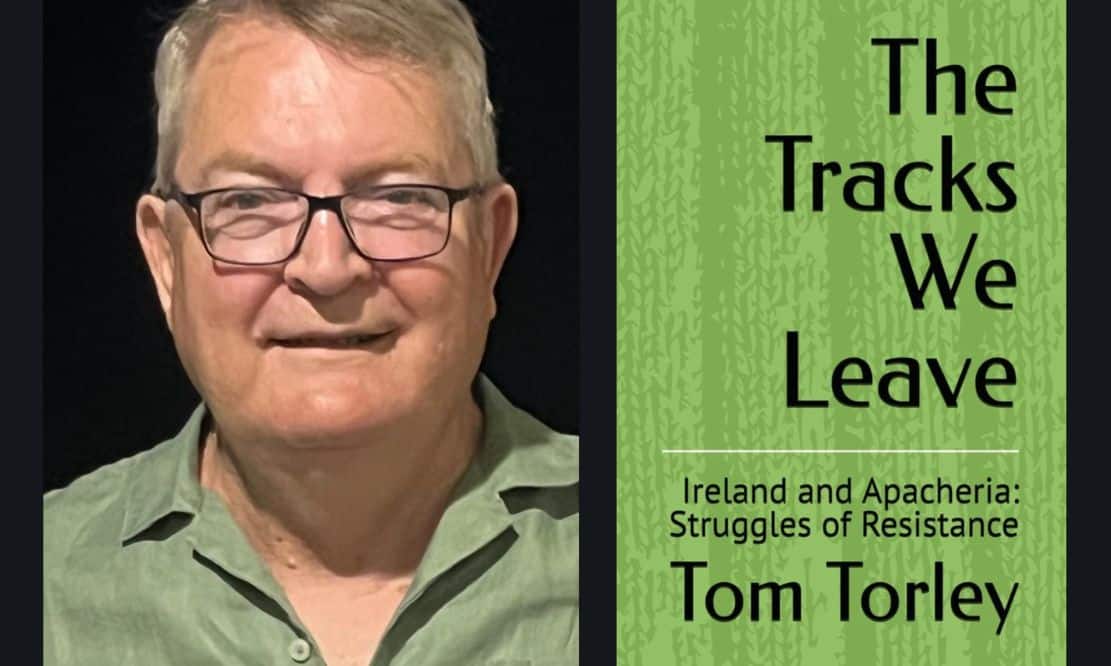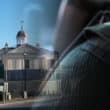
A former lecturer – who for many years inspired generations of students in the Newry area through his impassioned teaching of Literature – has used his new-found time in retirement to pen a “powerful” reimagining of historical events.
Tom Torely – now living in Crossmaglen – has always held a deep sense of admiration for the resilience, strength and passion of the Irish people… and indeed all “ordinary” people, who encountered suffering or struggle under the hands of time.
It’s something he encouraged young students to keep in mind through their studies, promoting writing as a tool for liberation and self-determination. It was never just a lesson, it was a solicitous attempt to understand.
Born into a family rooted in the sea, the docks, and working-class politics of Newry, he brings a unique perspective to historical fiction — one that champions the voices too often left out of official narratives.
Now, with a little extra time on his hands, Tom’s desire to further that understanding has led him to pen his first novel, aptly titled ‘The Tracks We Leave’.
Speaking to Armagh I about the novel’s genesis, Tom said: “It was very meticulously researched. It’s about four years in the works. It was a great adventure!
“Chiefly, what happened was I have always been a big hill walker and I know the Cooley [Peninsula] inside out. One of my family is Toner which is the name of one of the guys in the book and we always thought they were from Scotland, so we were doing a wee bit of ancestry research and we found out they were from the Glenmore in Cooley, which is around the back of the Carlingford mountains, and I couldn’t believe it!
“When I went into it, it was a five generation link. I had always done sort of tours, if you like, in Cooley, and had taken groups out and a few degree programme students out who were doing projects and, through that, ended up making quite a lot of friends in the area.”
Tom explained that his original idea for the novel at this point involved spotlighting the infamous outlaw, ‘Billy the Kid’ and while he says, “It wasn’t a Western as such”, Tom was much more interested in exploring the bandit’s links to Belfast. This, however, didn’t sit quite right.
Said Tom: “I wanted the link with Ireland and I sort of thought, ‘Why am I trying to force a link with Belfast when I know far more about Newry and Cooley?’ I think it’s about time that someone talked about these wonderful places.”
And, so Tom stayed true to what he knew and soon his story began to take shape… with a little help from more “ordinary” people.
“Talking to people down in Cooley, I found there’s still a lot of secrecy about the Famine. They feel ashamed of it, believe it or not. I was kicked under tables in pubs when I talked about it,” he quipped.
“It was hard to get information about. But, I eventually came up with this story about Phil Toner and his best friend, Sean Rice, and how the Famine and disease takes out their grandparents and then their parents and siblings and they take up this sort of act of resistance on the Ribbonmen [a 19th-Century popular movement of poor Catholics in Ireland]. Eventually they are driven so low they fight against them.
“I was going in to stuff written about the Irish in Cooley during the turn of the century time so a lot of the actual language is Irish in the book and translated.
“The book actually follows them across to America – it doesn’t say Coffin Ship because that’s a later construction – but it follows them across, how they escape to America, they have to escape out of Ireland first of all and go through Belfast and Liverpool and then they end up in New Orleans and work their way up on river boats. It tells the true story of the river boats as well and the Atlantic crossing, how they survived it and about working on the boats.”
Parallel to Phil and Sean’s story, the novel also delves into the “defiant struggle against colonial forces” in America following Tom’s sensitive reimagining of legendary Apache warrior Victorio and his sister Lozen.
Their story is then followed through to the novel’s conclusion, holding up a “mirror to the Irish experience of displacement and resistance”.
Continued Tom: “This novel explores the hidden histories that connect people across continents. Whether in the famine fields of Ireland or the borderlands of America’s Southwest, ordinary people have always resisted oppression — and that spirit of survival links us across time and place.
“It’s not about big historical figures. What interests me is the really amazing people on the ground who had a battle and survived it all.
“I think it’s timely for people to raise their voice and remember displaced people. This resonates with us. I hope people locally appreciate that. We tend to be shockingly marginalised in literature, politics and so many other ways.
“I would hope that it would give local people a lot of pride in what was done by the ordinary people of this area under very trying circumstances and I hope this typifies the spirit that was shown by those ordinary people and what they had to endure.
“With the Apache story, it’s a parallel for survival and resistance. In that sense, I think it’s timely for the world to remember. You can never suppress the truth… never. Those people will be remembered, because I remember them.”






